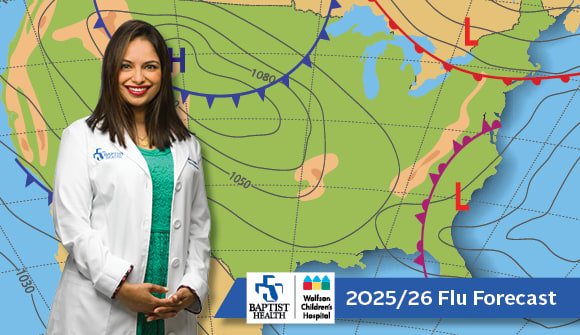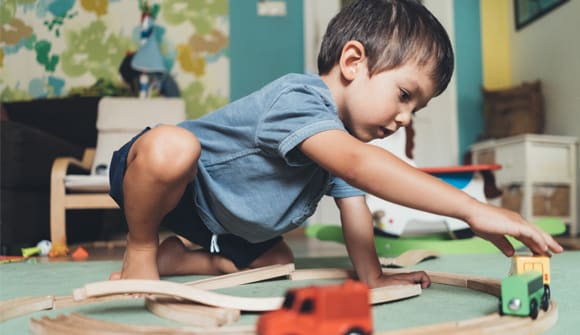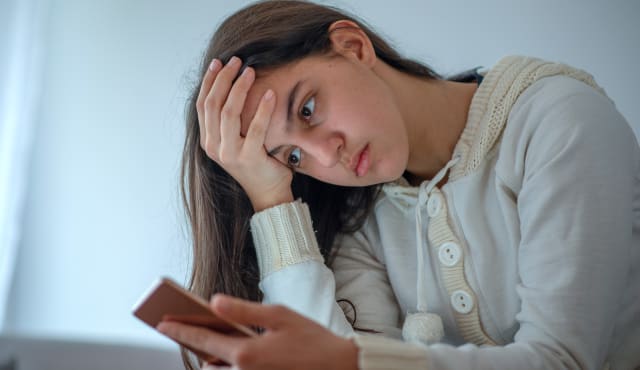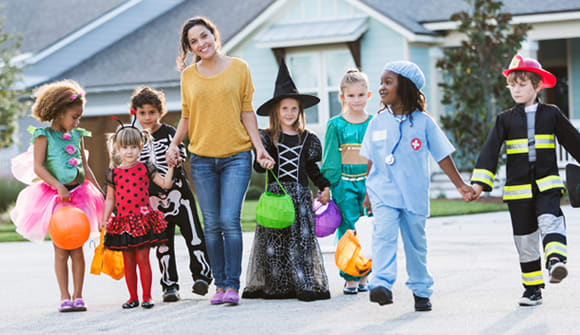Burn concerns
Potential hazards in the home.
Article Author: Wesley Roberts
Article Date:

Nearly 70,000 people each year are treated in emergency departments in the United States for burns, and a staggering third of those people are children under 5.
When an adult’s guard is down, accidents can happen in the blink of an eye. It’s easy for parents and caregivers to get distracted while cooking, entertaining or participating in outdoor activities. That’s why it’s important to include the entire family in burn safety, no matter how old the children are.
Veronica Bula, DNP, RN, CWOCN, a pediatric wound care nurse at Wolfson Children’s Hospital, encourages parents to talk to their children in an age-appropriate manner about the dangers of burns.
“Scald burns are the most common type of burns we see by far. This type of burn occurs from wet heat, with the most common being from hot water during baths or hot liquids such as instant soups and noodles,” Bula said. “I don't think people associate hot liquid in a cup or bowl when it’s off from the stove as a potential danger. That’s why supervision is critical.”
Tips to prevent burn injuries in children
These seven tips can help keep your family safe from common burn hazards:
- Create a “kid-free zone” of at least three feet around areas like stoves, microwaves and space heaters. Brightly colored tape works well as a visual reminder for kids of any age. It’s also a good idea to use the back burners of the stove and keep pot handles turned away from the edge. Don’t hold a child while you cook or have a hot drink in your hand.
- Limit microwave use by children. Remember to treat items coming from the microwave as you would those from the oven. Microwave noodles are one of the top reasons pediatric patients are seen for burns. Never warm a baby’s bottle in the microwave, as it can heat food and liquids unevenly.
- Avoid using tablecloths and placemats. Children can tug on these and cause hot food or liquid to spill. Consider using a travel mug with a tight-fitting lid for liquids.
- Set your water heater to 120 F, or just below the medium setting, and test the water with a bath thermometer. Run your hand through the water to check for hot spots. A safe temperature is 100 F when bathing young children. Never leave a child unattended in the bathtub, even for a few seconds! A child can be scalded in water at 140 F in just five seconds. Face the child away from the faucet so he or she can't reach it.
- Keep fireplace switches and remote controls out of the reach of children. Remember, glass fireplace doors can remain hot for up to one hour after use.
- Don’t leave children unattended around open flames such as candles, grills, fire pits or campfires. Seventy percent of campfire burns are caused by embers rather than flames. Fire pits remain hot enough to cause a severe burn up to 12 hours after being extinguished. Create a “safety circle” at least three feet from the edges of fire pits and campfires, even long after the fire has been put out. Teach kids to never put anything into the fireplace.
- Check electronic toys often for wear and tear. Throw away or repair any object that sparks, feels hot or smells odd. Replace batteries in electronic toys regularly and look for any signs of corrosion. Button batteries, which are often no bigger than a nickel, are used to power small electronic devices, including remote controls, watches, musical greeting cards and ornaments. When accidentally swallowed, they can get stuck in the esophagus and generate an electrical current that causes severe chemical burns and tissue damage. If your child has swallowed one of the batteries, go to the emergency room immediately.
What to do if your child gets burned
If a burn does happen, follow these steps:
- Use cool (not cold) tap water to stop the burning process.
- Remove all clothing and/or diaper from the injured area.
- Do not clean or dress the wounds. That means no ice, ointments or bandages! Simply cover the area in a clean, dry sheet. Keep the child warm.
- Seek medical attention immediately at an emergency department, no matter how small or large the affected area. Some burns can continue to cause further damage for up to 24 hours, changing it from a second-degree burn to a third-degree burn.
Expert burn care for children
The Porter Family Children’s Trauma Center is prepared 24/7 to treat children with the most serious illnesses and injuries, including burns. If your child’s injury or illness is life-threatening, call 911. For more information, visit wolfsonchildrens.com/er.



